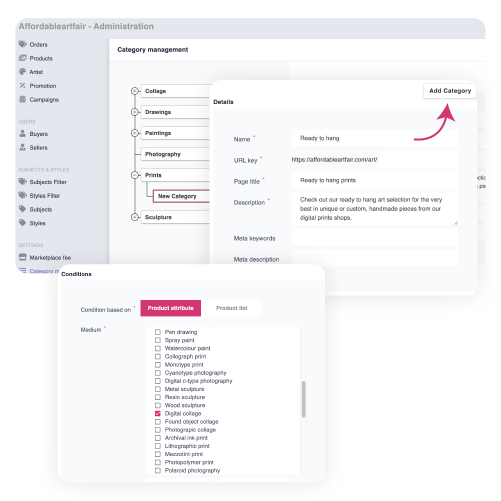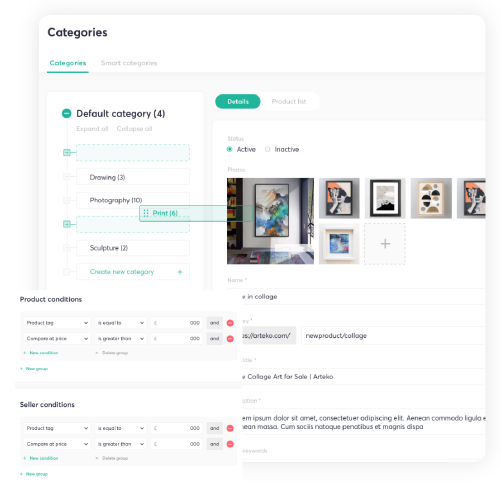Your marketplace site structure should offer fast, intuitive navigation for users and a logical hierarchy for search engine crawlers. Administrators should be able to manage categories efficiently, while sellers should find it easy to add their products to relevant categories.
CobbleWeb employs a three-stage process of discovery, validation, and optimisation, based on clearly defined user behaviour metrics, to ensure your marketplace category structure drives the best possible outcomes.
In the case of Fanpass, we created an easy-to-navigate administration panel to manage the relationships between various categories of tickets, events and venues. Dynamic forms make it easier for sellers to create listings within relevant categories, while dropdown category selection ensures good quality listings and more accurate search results for buyers.
FanPass saw £50,000 daily ticket sales within a year of implementation. The data the admin panel generated also helped us to identify profitable segments for further optimisation.
An example of category optimisation can be seen in the new smart category management feature we developed for Affordable Art Fair. It enables the platform administrators to create new categories from product tags, like Valentine’s Day. This makes it easier and faster to optimise platform navigation.
The smart category manager can also generate product lists based on different product and seller attributes, such as price, medium and location, to support ads on Facebook, Pinterest or Google.
Do you have a list of features in mind?
We can help you select and implement the right features for your marketplace.

